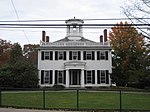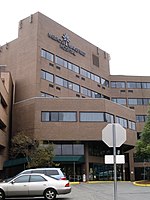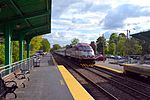Melrose, Massachusetts
1629 establishments in MassachusettsCities in MassachusettsCities in Middlesex County, MassachusettsMelrose, MassachusettsPopulated places established in 1629

Melrose is a city located in the Greater Boston metropolitan area in Middlesex County, Massachusetts, United States. Its population, per the 2020 United States Census, is 29,817. It is a suburb located approximately seven miles north of Boston. It is situated in the center of the triangle created by Interstates 93, 95 and U.S. Route 1. The land that comprises Melrose was first settled in 1628 and was once part of Charlestown and then Malden. It became the Town of Melrose in 1850 and then the City of Melrose in 1900.
Excerpt from the Wikipedia article Melrose, Massachusetts (License: CC BY-SA 3.0, Authors, Images).Melrose, Massachusetts
Emerson Place,
Geographical coordinates (GPS) Address Nearby Places Show on map
Geographical coordinates (GPS)
| Latitude | Longitude |
|---|---|
| N 42.458333333333 ° | E -71.066666666667 ° |
Address
Emerson Place 14;16
02176
Massachusetts, United States
Open on Google Maps










